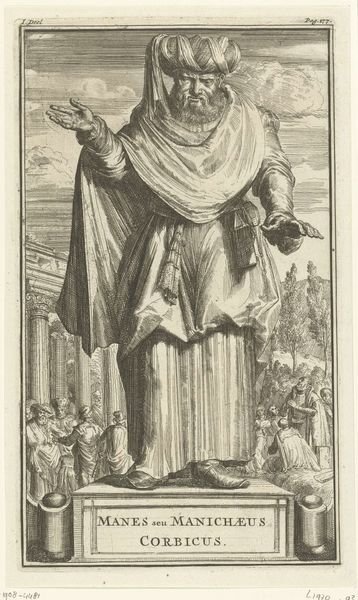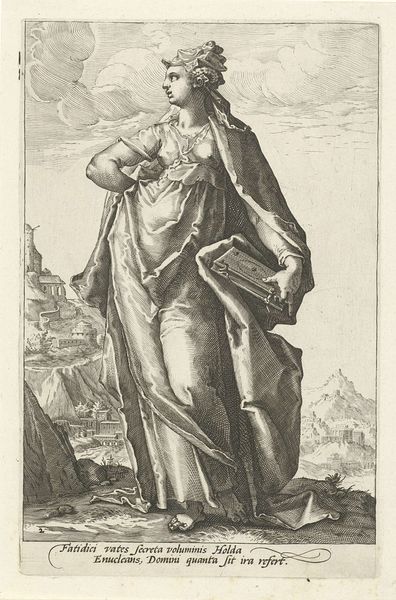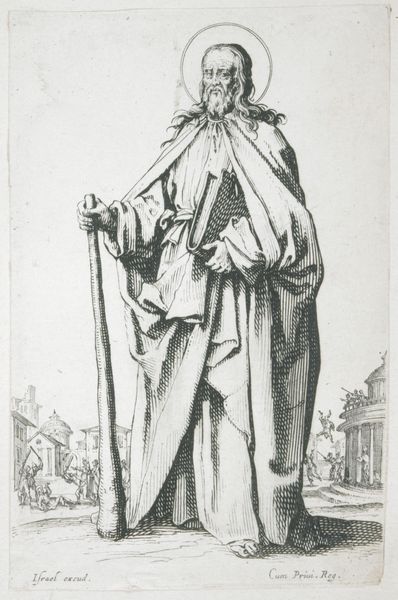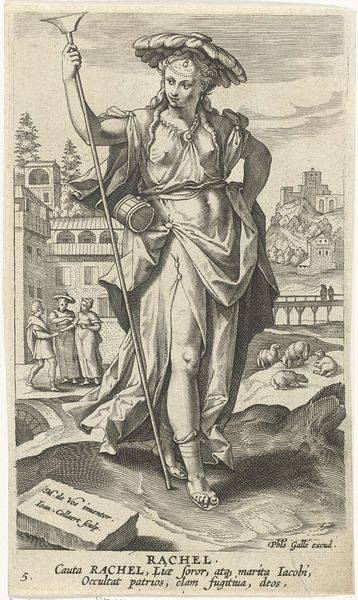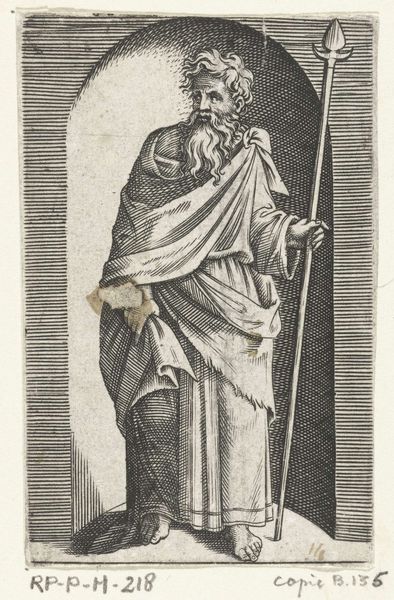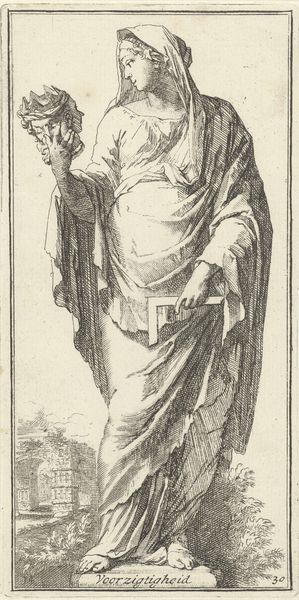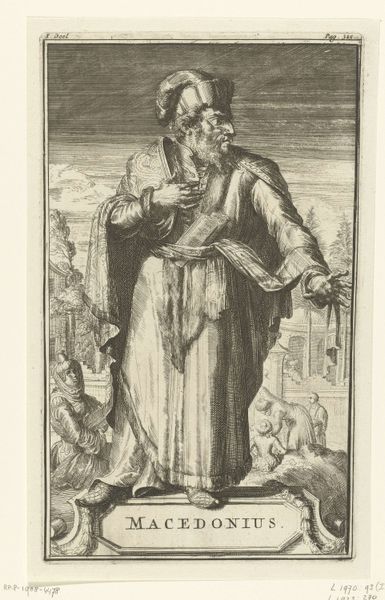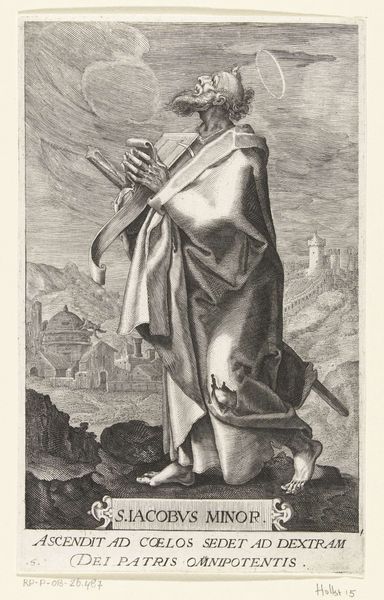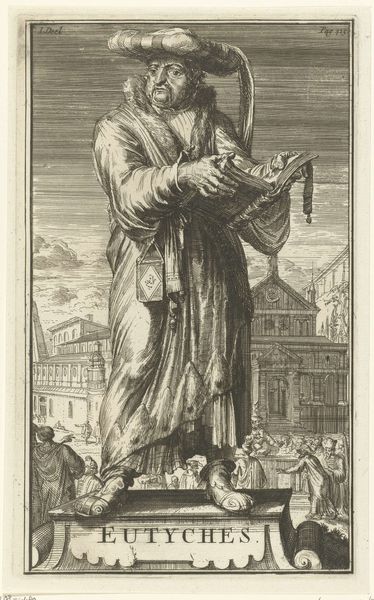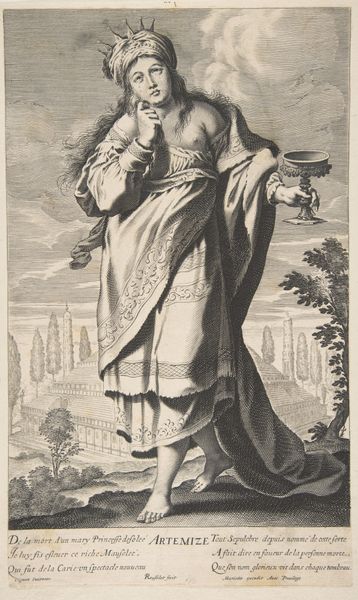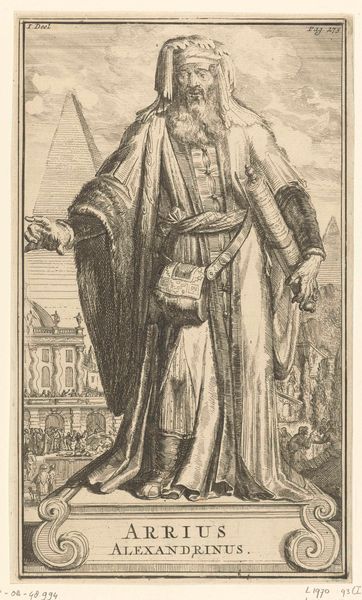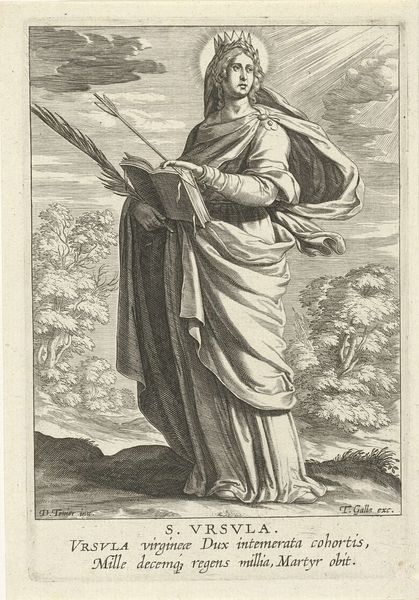
engraving
#
portrait
#
baroque
#
caricature
#
old engraving style
#
caricature
#
portrait drawing
#
history-painting
#
engraving
Dimensions: height 269 mm, width 159 mm
Copyright: Rijks Museum: Open Domain
Editor: Here we have Romeyn de Hooghe's "Portret van Nicolaus," an engraving from around 1700. It's quite striking. The figure dominates the frame, and the almost satirical exaggeration in his features is hard to miss. What do you see in this piece? Curator: I see a potent example of how early modern European art engaged with, and often misrepresented, other cultures. This "Nicolaus" isn’t just a portrait; it's a statement about the European gaze and its construction of the 'Other'. Note the turban, the implied exoticism. It's crucial to consider this within the context of burgeoning colonialism. Editor: So, the portrait is less about accurately depicting an individual and more about... projecting a European perspective? Curator: Precisely. Who was this Nicolaus, really? De Hooghe’s work presents a caricature, playing into stereotypes and power dynamics. The architectural elements and the bustling background reinforce a sense of "civilization" contrasted against an exoticized figure. Do you notice any visual cues that communicate such "differences" ? Editor: Yes, the exaggerated features and the orientalist garb create that contrast. Curator: Exactly. We must critically examine the ways in which artists like de Hooghe participated in constructing hierarchies and reinforcing prejudices through visual representation. Art isn't neutral; it's embedded in systems of power. Editor: I never really considered how portraiture could function as a tool of cultural othering like this. Thanks for opening my eyes to the complex dynamics at play. Curator: Indeed! Questioning representations and unpacking historical contexts are essential for a more nuanced understanding of art's role in shaping societal perceptions.
Comments
No comments
Be the first to comment and join the conversation on the ultimate creative platform.
